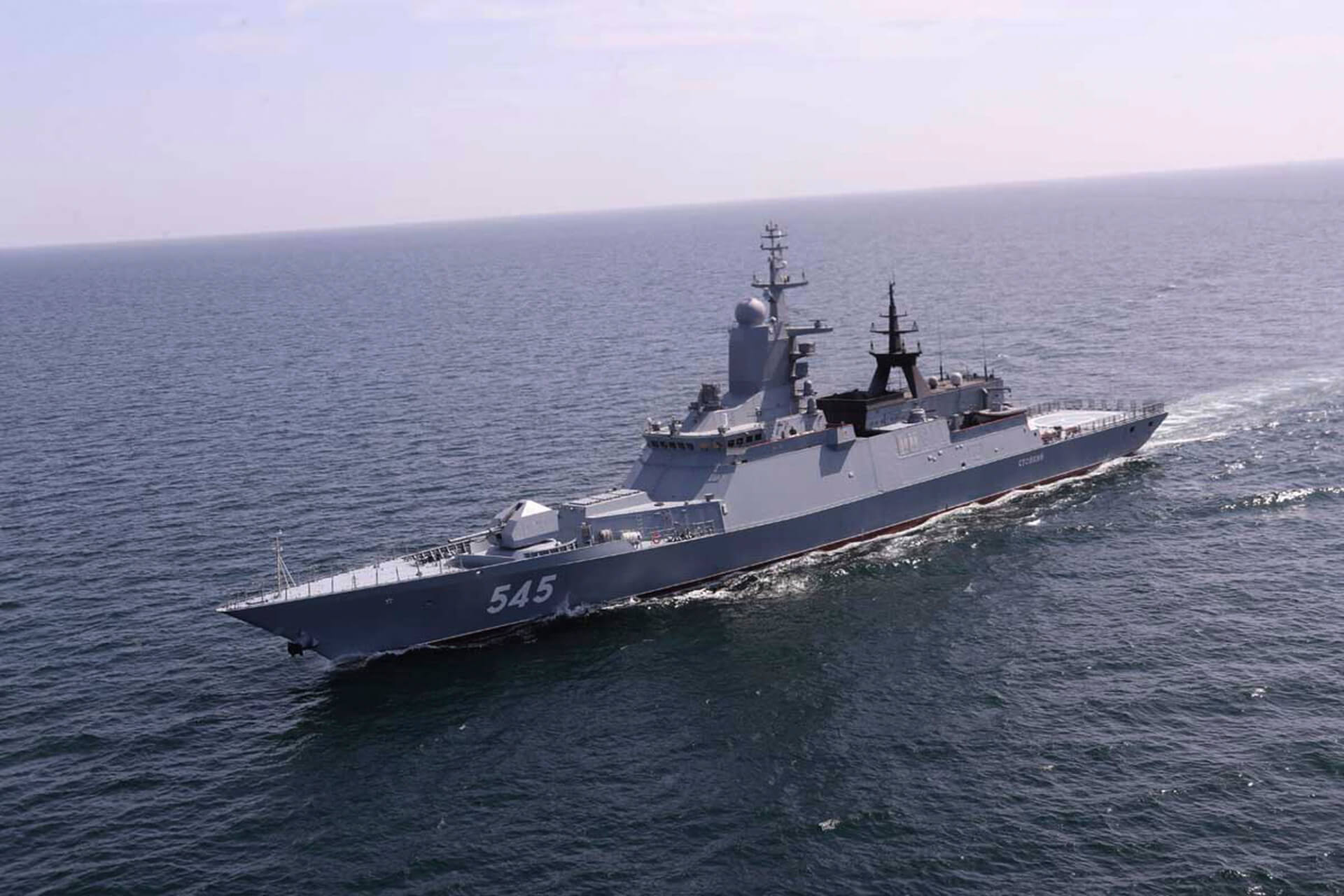Russia and Iran kicked off a three-day joint naval drill in the Indian Ocean on Tuesday, which, according to Iranian state media, is aimed at “boosting [the] security of maritime trade in the region.” The exercise, which has been dubbed ‘Iran-Russia Maritime Security Belt 2021’, is expected to cover an area of about 17,000 sq. km. in the northern part of the ocean and will include units from the Iranian Navy, the Islamic Revolutionary Guard Corps (IRGC) Navy, and the Russian Navy.
This is the second such drill between the two nations. Previously, they held similar exercises with China in the Indian Ocean and the Gulf of Oman in December 2019. Iranian Rear Admiral Gholamreza Tahani said that this year’s exercise—whose purpose was to “enhance the security of international maritime trade, confront maritime piracy and terrorism, and exchange information”—will feature the Indian Navy as well as China, in a message of “peace and friendship for neighbouring and regional countries.” The drill will include a “variety of defensive formations towards the key part of the exercises which will be to free a merchant vessel attacked by pirates,” he added. “The exercise we’re conducting with Russia is so flexible that not only one other country, but several others could join in later if they wish to do so,” he said.
Tehran in recent months has sought to step up its military cooperation with Beijing and Moscow amid increasingly strained ties with the United States (US). It has also increased military exercises of its own. Last week, the IRGC conducted a ground forces drill near the border with Iraq in which drones, helicopters, and military tanks were used. The exercise came just one day after Iranian officials warned the international community that it would suspend nuclear inspections and boost uranium enrichment further if other parties (namely the US) to the 2015 Joint Comprehensive Plan of Action (JCPOA) did not meet their obligations by February 21. The country is already enriching uranium up to 20%, which is significantly beyond the 3.5% agreed to in the deal, and the UN’s atomic agency, the IAEA, said last week that its inspectors have confirmed that Iran has begun the production of uranium metal.
Though the Biden administration has said that it will take a more dialogue-focused approach in dealing with Iran, the two sides have been stuck in a diplomatic standoff regarding their return to the nuclear deal, with neither side willing to move first. Tehran has promised to fully implement the terms of the agreement if (and after) the US lifts crippling sanctions on the country. However, Washington has said that removing the restrictive measures will not be possible until it is sure that Iran is complying with the deal.
Russia, Iran Begin Naval Exercises in Indian Ocean
The Indian Navy will also take part in the three-day drills.
February 17, 2021

SOURCE: THE TIMES OF ISRAEL
